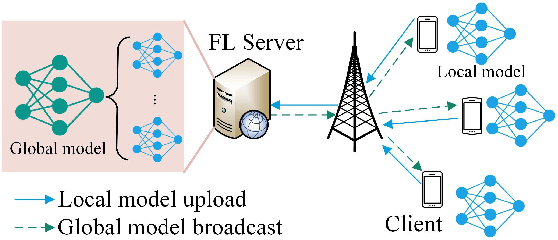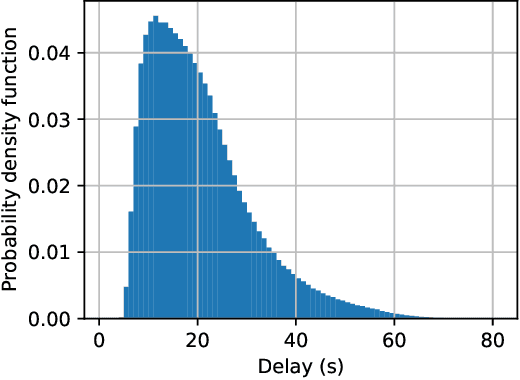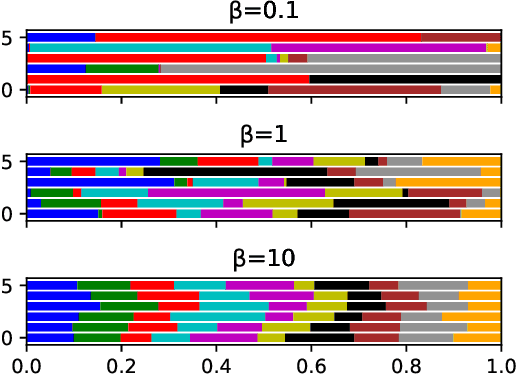Liangkun Yu
Latency Aware Semi-synchronous Client Selection and Model Aggregation for Wireless Federated Learning
Oct 19, 2022



Abstract:Federated learning (FL) is a collaborative machine learning framework that requires different clients (e.g., Internet of Things devices) to participate in the machine learning model training process by training and uploading their local models to an FL server in each global iteration. Upon receiving the local models from all the clients, the FL server generates a global model by aggregating the received local models. This traditional FL process may suffer from the straggler problem in heterogeneous client settings, where the FL server has to wait for slow clients to upload their local models in each global iteration, thus increasing the overall training time. One of the solutions is to set up a deadline and only the clients that can upload their local models before the deadline would be selected in the FL process. This solution may lead to a slow convergence rate and global model overfitting issues due to the limited client selection. In this paper, we propose the Latency awarE Semi-synchronous client Selection and mOdel aggregation for federated learNing (LESSON) method that allows all the clients to participate in the whole FL process but with different frequencies. That is, faster clients would be scheduled to upload their models more frequently than slow clients, thus resolving the straggler problem and accelerating the convergence speed, while avoiding model overfitting. Also, LESSON is capable of adjusting the tradeoff between the model accuracy and convergence rate by varying the deadline. Extensive simulations have been conducted to compare the performance of LESSON with the other two baseline methods, i.e., FedAvg and FedCS. The simulation results demonstrate that LESSON achieves faster convergence speed than FedAvg and FedCS, and higher model accuracy than FedCS.
Backhaul-Aware Drone Base Station Placement and Resource Management for FSO based Drone Assisted Mobile Networks
Dec 24, 2021



Abstract:In drone assisted mobile networks, drones mounted small cell base stations (DBSs) are responsively and flexibly deployed over any Places of Interest (PoI), such as sporadic hotspots and disaster-struck areas, where the existing mobile network infrastructure is unable to provide wireless coverage. Here, a DBS is a relay node to relay traffic between a nearby macro base station (MBS) and the users. In addition, Free-space optics (FSO) is applied as the backhauling solution to significantly increase the capacity of the backhaul link between an MBS and a DBS in a drone assisted mobile network. Most of the existing DBS placement solutions assume the FSO based backhaul link provides sufficient link capacity, which may not be true, especially when a DBS is placed far away from an MBS (e.g., > 10 km in disaster-struck areas) or in a bad weather condition. In this paper, we formulate a problem to jointly optimize bandwidth allocation and DBS placement by considering the FSO based backhaul link capacity constraint. A Backhaul awaRe bandwidth allOcAtion and DBS placement (BROAD) algorithm is designed to efficiently solve the problem, and the performance of the algorithm is demonstrated via extensive simulations.
 Add to Chrome
Add to Chrome Add to Firefox
Add to Firefox Add to Edge
Add to Edge